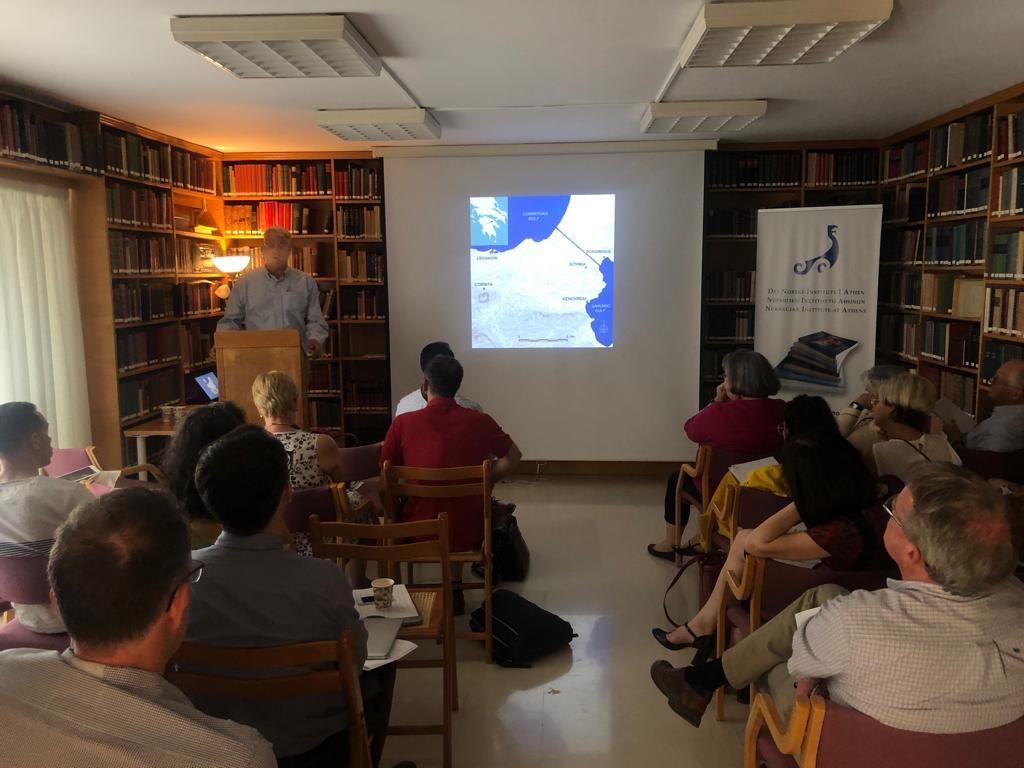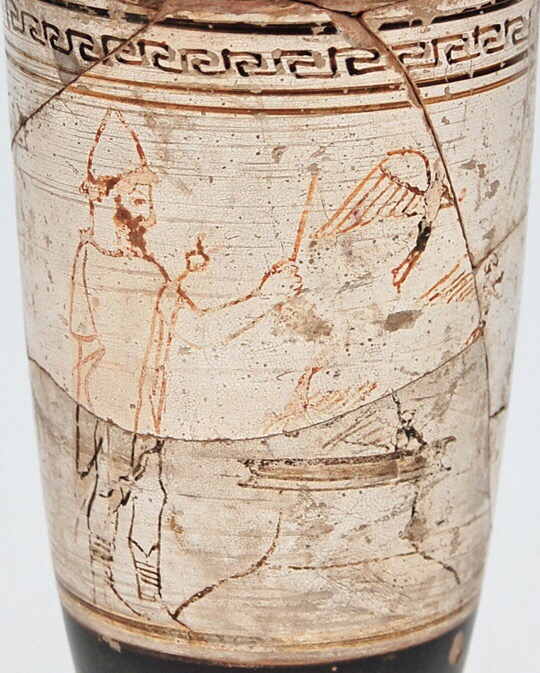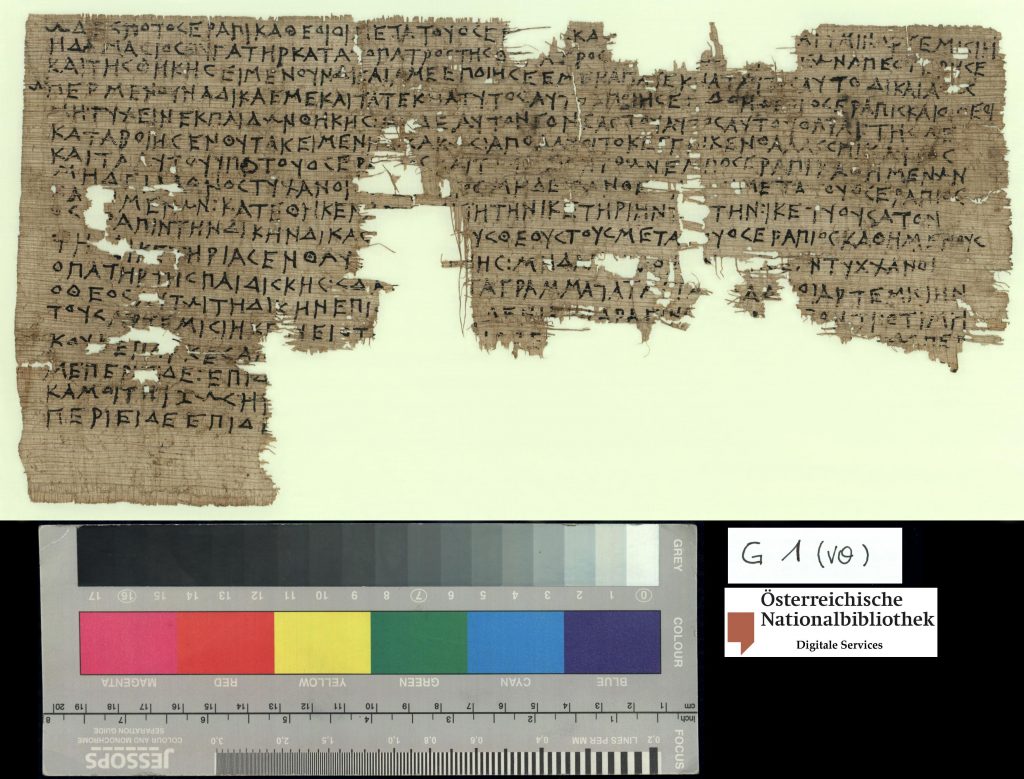
Last weekend (7-9 July 2019), I was fortunate enough to serve as a chair for the third conference in the series “Curses in Context”, organised by Christopher A. Faraone and Sofía Torallas Tovar of the University of Chicago at the Norwegian Institute at Athens. This fascinating conference series is aimed at understanding the material remains of curse rituals in the ancient Mediterranean – the short texts, usually written on lead, with which speakers of Greek, Latin, Aramaic, Coptic, and other languages tried to destroy their enemies and seduce potential lovers. These texts are particularly important for our knowledge of the ancient Mediterranean – not only because they are rich sources for magic and religion, but also because they offer windows onto deeply personal aspects of life which are often invisible in other types of texts.
In this post, I’ll give a brief summary of the papers given by each of the presenters. While these deal with Greek-language magic, they are part of the same larger tradition to which Coptic magic belongs, and these discussions were very useful for me in my current work preparing an article on a group of Coptic curses.
Several of the papers focused on the theme of the origins and development of Greek-language curses. Camilla Campedelli (Berlin-Brandenburgische Akademie der Wissenschaften) discussed her recent work exploring the possible origins of Greek curse tablets, which appear suddenly in Sicily in the 6th century BCE. Campedelli discussed theories that curse rituals, along with many other cultural traditions, were brought to Greece from the Near East, where similar practices are described in the tenth-century BCE Maqlû incantations from Assyria. These might have been brought to Sicily by Phoenicians, who lived there alongside Greeks from the eighth century CE. Although these ideas are promising, Campedelli pointed out that the only published Phoenician curse tablet, from third-century BCE Carthage, is later than the earliest Greek ones known to us.
Thea Sommerschield (Oxford University) drew upon concepts of diasporic identity and Hannah Arendt’s theorisation of violence, power and authority to discuss the ways in which the multicultural landscape of sixth-century Sicily might have created fertile ground for the appearance of the first curse tablets. Using ideas developed by Richard Gordon (University of Erfurt), she explored the ways in which the earliest tablets – consisting simply of the names of victims to be cursed, might have appropriated the authority of similar lists of names which appeared in public inscriptions. Similar ideas recurred in the paper of Jaime Curbera (German Institute of Archaeology, Berlin), who discussed his extensive work editing the huge collection of unpublished curses in the National Archaeological Institute, and highlighted some particularly important Athenian curse tablets, among whose targets are such well-known historical figures as Demosthenes and Lycurgus; one (DT 49, ca. 300 BCE) even curses a group including several “celebrity chefs”, known from Athenian comedies.

Sara Chiarini (Otto-von-Guericke-Universität Magdeburg) is one of the main researchers responsible for the online database TheDeMa, a fantastic online resource which contains full entries for over 1700 curse tablets. Her talk discussed the distribution of curse tablets from Attica, the region centred on Athens, which seem to have appeared here around the fifth century before tailing off around the first century BCE, although they continue to be found in small numbers until the sixth century CE. Amongst other things, she discussed the difficulty of determining the social context of curses; historians often assume that a curse against a cook’s business, for example, must have been used by a rival chef, since it targeted his livelihood. But, as she pointed out, curses seem to aim for the weak spots of their targets – business, love, health – and so such a curse could have been used by anyone who had a grudge against the chef.
Jessica Lamont (Yale University) also focused on the curses from Attica, but took a different, complementary approach. Like the speakers discussed above, she linked the development of written curses to a broader “epigraphic habit” – the increase of literacy, and the development of cultural norms of writing things down. But she also noted that some of the curses seemed to contain dactylic hexameter – one of the main meters of Greek poetry, used in epics such as the Iliad and Odyssey, for example. This is important because we know that this rhythmic meter was primarily used in oral recitals – the epics were originally performed for an audience – which suggests that the written curses first existed in a purely spoken form. This has long been suspected, but Lamont’s work opens up new possibilities for testing this hypothesis in more detail.

Jutta Stroszeck (Kerameikos Museum) discussed the extensive finds from the area of ancient Athens known as the Kerameikos. Large numbers of curse tablets have been found here, but in very specific sites. We know from the Roman-period handbooks that curse tablets were supposed to be buried in specific places to be effective – in human burial sites or water, for example. This agreed with the findspots of the tablets from the Kerameikos, found almost without exception in graves or wells. But there were even more detailed rules – of over 6000 tombs, curse tablets were found in only 15, and this seems to conform to the Greek idea that particular categories of the dead – those who had died young, or violently, or were denied proper burial – became restless spirits who were more useful for magic. In several cases, we can confirm that the graves in which the tablets were found belonged to warriors, young children, or were mass graves. Jorge Bravo (University of Maryland), an expert in Greek hero cults, explored this theme from a slightly different perspective. Hero shrines were often the tombs of figures of the ancient past, and so would seem to be ideal sites for burying tablets, but in fact, of 30 or so known hero shrines, only two have been found to contain curse tablets. Bravo focused on one of these, the shrine of Opheltes at Nemea. Opheltes was a young prince killed by a serpent, honoured by a cult at Nemea from the sixth century. Bravo suggested that Opheltes’ early, violent death might have made him a hero particularly suitable for being invoked in curse tablets.
The relationship between gods and curses was discussed most deeply by Athanassia Zografou (University of Ioannina), who literally wrote the book on Hecate, the Greek “goddess of magic”, often invoked in the curse tablets. Zografou discussed the relationship between the Hecate of curses and the Hecate of public cults, with subtle differences revealed by the epithets given to the goddess, as well as her relationship with the other key gods of the curse tablets, Hermes, Earth, Artemis, and the Mother of the Gods.
Evangelos Kroustalis (National University of Athens) discussed curse tablets from the Piraeus, the harbour of Athens. These include many of the classic signs of curse rituals – lead tablets pierced by nails – but also some more unusual features, including dead bodies grasping curse tablets in their hands, implying that they were deposited at the same time as the people were buried, or only shortly after. Theodore Eliopoulos (Ephorate of Antiquities, Athens) discussed further tablets from Athens, this time from the Kynosarges cemetery. This group included a fascinating pair of “voodoo dolls”; similar examples have been found with curse tablets or on their own, but this pair was notable for being especially finely sculpted. The excavator suggested that the pair, a man and a woman, seems to have been bound back to back. They were deposited on a rudimentary tumulus heaped by an offering trench. In various spots in the cemetery nine curse tablets (fully preserved or fragmentary) were found. Of these, only one fragment was from the interior of a tomb.
The paper of Christopher A. Faraone (University of Chicago) left Attica behind to look at the famous “Curse of Artemisia”, one of the earliest surviving papyri in Greek, from 4th-century BCE Memphis in Egypt. Artemisia, a descendant of Greek colonists, wrote the curse as a prayer to Oserapis, the mummified Apis bull, asking for justice in her conflict with her dead daughter’s husband, who had prevented her proper burial. Faraone linked this papyrus to physically similar curses from the eastern Mediterranean, all written by women in Greek, asking for justice after having suffered from crimes such as theft. Some of these, written in “epigraphic” hands typical of public inscriptions, seem to have been intended to have been read, and Faraone, drawing on the work of Henk Versnel, suggested that these publicly-displayed “prayers for justice” should be considered a distinct sub-group of Greek curses. Similar ideas of public engagement were explored by Joseph Rife (Vanderbilt University), who discussed four tablets, dating to the first to third century CE. These curses were found in a tomb on the Corinthian isthmus, and they too may have been displayed in front of the sarcophagi of those they addressed. Rife discussed the evidence for interaction with the dead from the site, including the benches in the tomb, used by visiting family in commemorations for the deceased, and the evidence of Greek and Latin novels, which describe bandits and squatters making their homes in tombs. Rife imagines a community of readers, who might have read and reflected on the curse tablets left in the monuments to the dead.

Going further afield to Olbia, a Greek site on the Black Sea in modern Ukraine, Irene Polinskaya (Kings College London) discussed the evidence for Greek cursing practices in this relatively remote corner of the Greek world, very similar to those found in Sicily or Athens. One interesting difference, though, is to be found in the fact that several curses are written on clay vessels, which seem to have often been placed upside-down on tombs before being broken, implying a specific local variation of the curse ritual.
Two speakers commemorated past scholars; Leslie Threatte (University of California at Berkeley) spoke movingly about his long association with David R. Jordan (1942-2018), from their first meeting as aspiring musicians in 1957, to 2018, when Jordan passed away. Jordan was one of the founders of the study of ancient Greek curses, publishing them in his doctoral dissertation and continuing to catalogue, collect and discuss them over his decades-long career; it is thanks to him that so many excavators look out for them in their digs, and so many scholars have chosen to study them.
Anastasia Maravela (University of Oslo) looked at another towering figure in ancient magic, Samson Eitrem, in whose honour David R. Jordan organised a conference at the Norwegian Institute at Athens in 1997. Eitrem was an expert on curses in his own right, authoring the entry on Greek curses in the Oxford Classical Dictionary, and publishing one of the largest and most interesting of the Greek magical papyri, PGM XXXVI (P. Oslo I 1), dating to the fourth century CE. Maravela documented Eitrem’s research methods, and his painstaking notes on the magical papyrus, spanning decades. Eitrem, a historian of religion, shows many of the traits of evolutionism and comparativism, which have fallen out of favour in academia, but which demonstrate his immense learning and intellectual curiosity. His notes on the papyrus range from ancient Assyria to modern Norway, and raise the problem for scholars on how to manage references. Every answer to a question raises more questions, and so it might be possible to imagine a footnote that goes on forever, explaining an ever-increasing list of phenomena in ever-increasing detail, and, as scholars, we have to find a balance between explaining too little, and trying to explain too much.
This was a truly fascinating conference for me, and I look forward to following the participants and their work in the future. More information can be found in the links above, and, if you were one of the speakers, please don’t hesitate to get in touch to clarify or correct any points.

One Comment
Pingback: